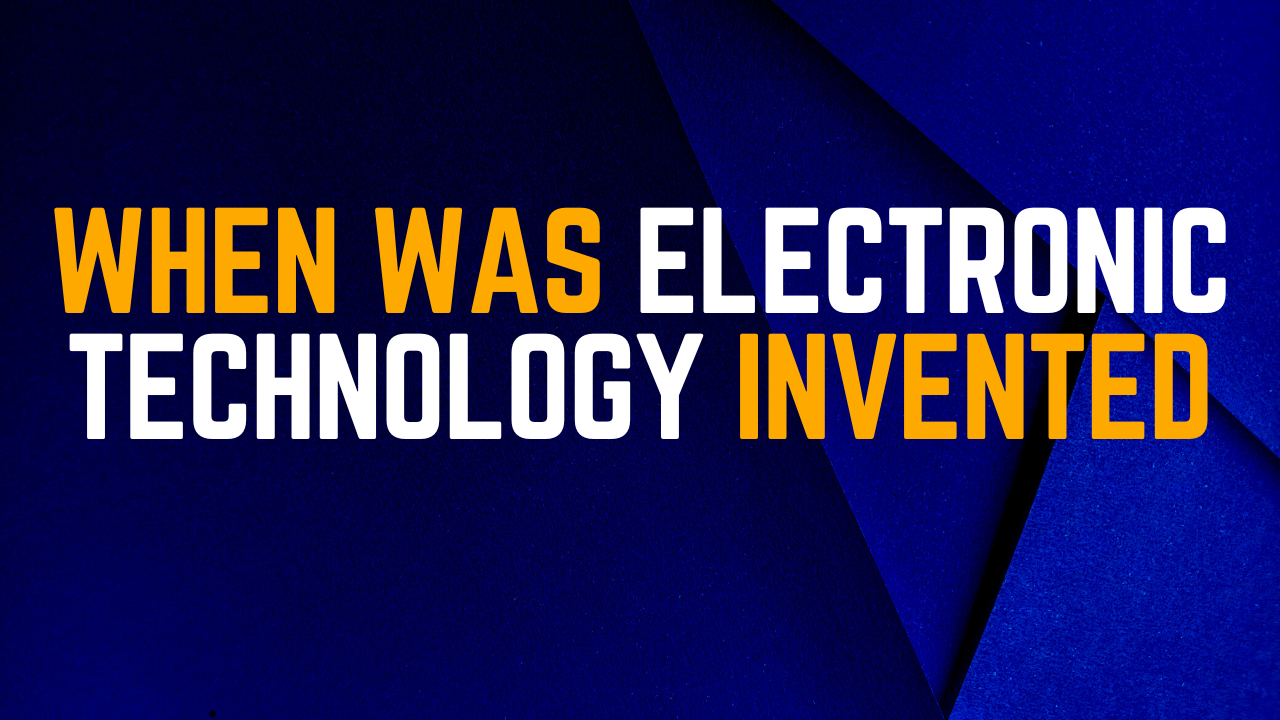Electronic technology has become an integral part of our daily lives, shaping the way we communicate, work, and entertain ourselves. But when did this transformative technology come into existence? The journey of electronic technology’s invention is a fascinating one, spanning centuries of innovation and scientific discovery. In this article, we will explore the evolution of electronic technology and pinpoint key milestones that led to its creation.
Early Beginnings:
The foundations of electronic technology can be traced back to the late 19th century, with the advent of the telegraph. Samuel Morse and Alfred Vail developed the Morse code and the telegraph system in the early 1830s, enabling long-distance communication via electrical signals transmitted along wires. This innovation marked the birth of electronic communication.
The Invention of the Vacuum Tube:
One of the most crucial developments in electronic technology occurred in the late 19th and early 20th centuries with the invention of the vacuum tube. Sir John Ambrose Fleming’s development of the vacuum tube diode in 1904 paved the way for amplifying electrical signals, which was essential for the emerging field of electronics. The vacuum tube triode, developed by Lee De Forest in 1906, allowed for greater control of electrical current and became a cornerstone of early electronic technology.
The Birth of Radio:
The vacuum tube’s invention had a profound impact on the field of radio communication. Guglielmo Marconi’s successful wireless telegraphy experiments in the late 19th century led to the creation of the first radio transmitters and receivers. By the early 1920s, radio broadcasts were becoming a popular form of entertainment and information dissemination, thanks to electronic technology.

The Advent of Semiconductors:
The invention of the transistor in 1947 by John Bardeen, Walter Brattain, and William Shockley at Bell Laboratories revolutionized electronic technology. Transistors replaced vacuum tubes, offering smaller sizes, lower power consumption, and increased reliability. This breakthrough paved the way for the miniaturization of electronic devices and the development of modern computers.
The Computer Revolution:
The mid-20th century saw the birth of modern computing. The Electronic Numerical Integrator and Computer (ENIAC), completed in 1945, is often considered the world’s first general-purpose electronic digital computer. ENIAC’s massive size and power consumption were limitations, but it marked the beginning of the computer age.
The development of the microchip, or integrated circuit, in the late 1950s and early 1960s by Jack Kilby and Robert Noyce, was a watershed moment in electronic technology. Microchips allowed for the integration of thousands, and eventually, millions, of transistors on a single semiconductor substrate, leading to the creation of smaller, more powerful, and energy-efficient computers and electronic devices.
The Digital Revolution:
The late 20th century witnessed the digital revolution, with the proliferation of personal computers, the internet, and mobile devices. The creation of ARPANET, the precursor to the internet, in the late 1960s, laid the groundwork for the global connectivity we enjoy today. Advances in semiconductor technology, including Moore’s Law, led to exponential growth in computing power and storage capacity.
Electronic technology’s invention is a story of innovation, collaboration, and relentless pursuit of knowledge. From the telegraph to the transistor and the microchip. Each milestone in electronic technology’s history has contributed to the digital age we live in today. As we look to the future. Developments in artificial intelligence, quantum computing, and beyond. It is clear that the journey of electronic technology is far from over. Promising exciting possibilities and continued transformation in our lives.
More for You: The Future of Artificial Intelligence


Hello my loved one I want to say that this post is amazing great written and include almost all significant infos I would like to look extra posts like this
Thank you for the good writeup It in fact was a amusement account it Look advanced to far added agreeable from you However how could we communicate
I don’t think the title of your article matches the content lol. Just kidding, mainly because I had some doubts after reading the article.